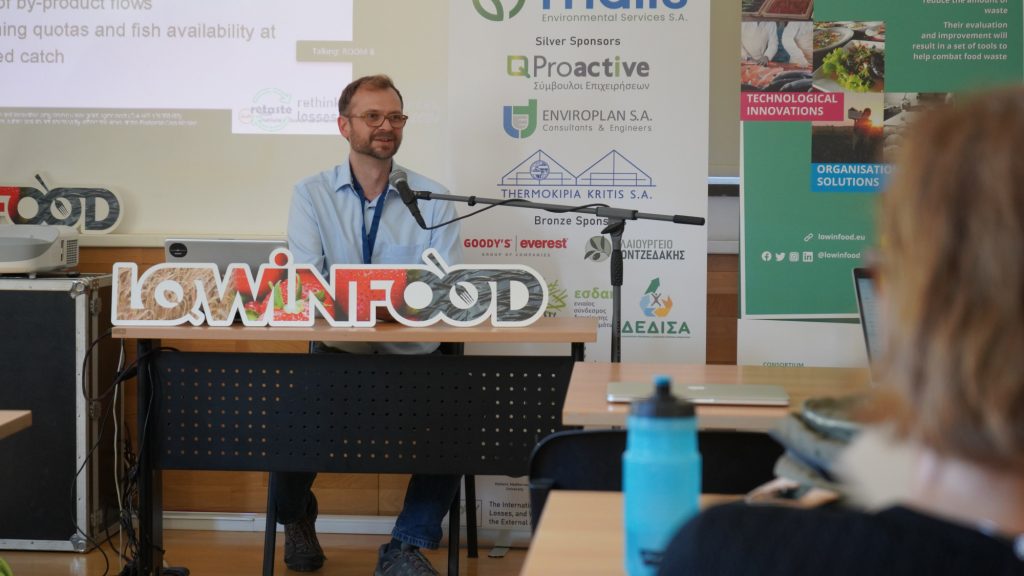
Barriers and opportunities to adding value to seafood surplus materials
On 25 September 2024, LOWINFOOD partner Tobias Engelmann (iSuN – Institute of Sustainable Nutrition) presented at the Retaste Conference the results attained in the implementation of the innovations LOWINFOOD is involved in regarding the fish sector. He provided insights from value chain stakeholders on barriers, opportunities, and potential interventions for adding value to seafood materials or reducing surpluses through increased efficiency, obtained in a two-step process.
First, they conducted a whole chain dialogue among stakeholders to identify waste flows and promising interventions. The case studies covered in LOWINFOOD were dialogues among stakeholders in the fish sector in Scotland, where fishing is a key economic sector, and Germany, the largest EU consumer market. Each dialogue pointed to different aspects such as the lack of demand for by-products from high-value users and the shortage of (skilled workers), which can lead to cold chains being interrupted or goods not being sold on time.
Based on the dialogue results, they then developed lists of existing barriers, opportunities, and interventions, and asked industry and policy stakeholders to rank them in a survey disseminated at relevant events. Regarding barriers, the costs of sorting, storing, and transporting surplus was the challenge selected most often by respondents. As for opportunities, the most selected option was widening the range of seafood species demanded through promotional activities, whereas policy and legislative change to reduce costs for small businesses with irregular flows was the most selected intervention.
Share on Facebook Share on Twitter Share on Pinterest